Σαν Αντόνιο, Τέξας 1988
Ο Ντέιβιντ Ταλαμάντεζ, του οποίου η μητέρα είναι στη δουλειά, αφήνει το χαρακτηριστικό στίγμα του παντού στην αυλή του σχολείου. Έχει ένα χοντρό πάκο από χαρτιά με γραμμές και πετάει ένα-ένα τα φύλλα ψηλά στον αέρα, τα παρακολουθεί
να πιάνονται στους προφυλακτήρες των αυτοκινήτων των δασκάλων, να παρασύρoνται και να καταλήγουν στην υπόλευκη, στενόμακρη σκιά της βρύσης. Μια τελευταία δεσμίδα με συρραμμένα φύλλα, τα τυλίγει σφιχτά σε ένα αυτοσχέδιο χωνί και φωνάζει μ’ αυτό:
Ντέιβιντ! και Ντέιβιντ, ΝΑΙ! προτού το εκσφενδονίσει με δύναμη στην οδό Μπράζος κόντρα στο φως, με ελαφρά σκυφτό το κεφάλι και τους ώμους όταν απέναντι, ασφαλής πια, κλωτσάει ένα κονσερβοκούτι
στο ρείθρο του πεζοδρομίου και περιπλανιέται μέχρι να φτάσει σπίτι. Ο Ντέιβιντ Ταλαμάντεζ πιστεύει ότι τα πουλιά είναι θερμόαιμα επειδή πετούν γρήγορα στον αέρα και βγάζουν μακρόσυρτες και πολύπλοκες μελωδίες, πάντα διαφορετικές,
όχι σαν τις γάτες και τους σκύλους. Γι’ αυτό και πήρε χαμηλό βαθμό στη Μελέτη Περιβάλλοντος, αλλά κι επειδή έγραψε το όνομά του σε λάθος σημείο, στα δεξιά με την ημερομηνία αντί να το γράψει αριστερά εκεί που λέει Ερωτήσεις Mελέτης Περιβάλλοντος
κι επειδή δεν άφησε μια γραμμή ανάμεσα στον τίτλο και τις απαντήσεις του. Τα Χ για τα λάθη του είναι μεγάλα, πολύ μεγαλύτερα από τα μικροσκοπικά γραμματάκια του Ντέιβιντ Ταλαμάντεζ. Κάνε μεγαλύτερα γράμματα! του λέει η δασκάλα του
με κόκκινο μελάνι πάνω-πάνω σε πολλές απ’ τις κόλλες του. Ακατάστατος! του γράφει σε άλλα σημεία, εκεί όπου είχε σβήσει και ξαναρχίσει και ξανασβήσει και ξαναγράψει. Ορθογραφία, Γλώσσα, Έκφραση, Γράψτε προτάσεις χρησιμοποιώντας
τις παρακάτω λέξεις: «Υποκοριστικό». Έχω ένα υποκοριτ̶σ̶ι̶στικό. ΟΧΙ! Βαθμολογία; 2άρια, 3άρια. Συκεντρώσου! Είναι όμως καλός στα Εικαστικά, πήρε 7 την ώρα της ανάγνωσης στην καλλιτεχνική γωνιά, όπου ξεπατίκωσε και χρωμάτισε
μια εικονογράφηση από το παραμύθι Η Μικρή Κοτούλα: Μια χήνα με ασπροκόκκινο ριγέ πουκάμισο, μια κότα με τιρκουάζ φόρεμα. Του αφαιρέθηκαν βαθμοί για τα πουλιά, το σύννεφο και την πεταλούδα που σχεδίασε από μόνος του. Δεν υπάρχουν στο πρωτότυπο!
Μείον 2,5 γιατί δεν έγραψες τίποτα στο κενό, εκεί που λέει «Αυτή είναι η αγαπημένη μου σκηνή στο βιβλίο διότι…» Υπάρχει μια σελίδα που ονομάζεται Κανόνες. Ακούμε! Δουλεύουμε πάντοτε! Μένουμε στη θέση μας!
Σηκώνουμε το χέρι μας πριν μιλήσουμε! Δεν τσακωνόμαστε! Κάνουμε ησυχία! Αντιγραφή των κανόνων από τον πίνακα, δεν μπήκε βαθμός, μόνο ένα τεράστιο κόκκινο νι. Αργότερα, τα παιδιά έγραψαν κι ένα τεστ πάνω στους Κανόνες. Αοκύμε! Δολέβουμε πανττε! μέννουμε στι θεσι αμς!
σικώνουμε το έχρι μας πρνι μιλίσουμε! Δεν τσακονόματσε! κανουμε ισιχία! Παίρνει 7 στους Κανόνες, 1 στην Ορθογραφία. Ένας ηλικιωμένος σκύβει να σηκώσει μία τσαλακωμένη ζωγραφιά. Δείχνει μία πολυμελή οικογένεια, στριμωγμένη γύρω από ένα τραπέζι, σε ένα διαμέρισμα
με κάγκελα στα παράθυρα, στη συνοικία Αλαζάν με τις εργατικές πολυκατοικίες και, σε μια γωνιά, έναν τεράστιο ήλιο που λέει: πολλύ φαασρία! Οι λέξεις έχουν διορθωθεί και ο βαθμός είναι 9. Ωραίες λεπτομέρειες! Υπάρχει ακόμα κάτι χαρακτηριστικό πάνω σε αυτό το χαρτί
και σε όλα τα άλλα, αυτό στην είσοδο του ινστιτούτου αισθητικής La Rosa, αυτό που ο άνεμος το φύσηξε κάτω από το τραπέζι του μπιλιάρδου στο La Tenampa, αυτά τα χαρτιά με τα οποία τα μεγαλύτερα παιδιά έχουν φτιάξει μεγάλες σαλιωμένες μπαλίτσες, αυτά τα χαρτιά που τα πατούν
τα αυτοκίνητα. Σε κάθε σελίδα, ο Ντέιβιντ Ταλαμάντεζ έχει διαγράψει την κόκκινη βαθμολογία της δασκάλας κι έχει σημειώσει με δικά του γιγάντια μπλε γράμματα: Ναι! Ντέιβιντ, ΝΑΙ!
David Talamántez on the Last Day of Second Grade
San Antonio, Texas 1988
David Talamántez, whose mother is at work, leaves his mark everywhere in the schoolyard,
tosses pages from a thick sheaf of lined paper high in the air one by one, watches them
catch on the teachers’ car bumpers, drift into the chalky narrow shade of the water fountain.
One last batch, stapled together, he roles tight into a makeshift horn through which he shouts
David! and David, yes! before hurling it away hard and darting across Brazos Street against
the light, the little sag of head and shoulders when, safe on the other side, he kicks a can
in the gutter and wanders home. David Talamántez believes birds are warm blooded,
the way they are quick in the air and give out long strings of complicated music, different
all the time, not like cats and dogs. For this he was marked down in Science, and for putting
his name in the wrong place, on the right with the date instead of on the left with Science
Questions, and for not skipping a line between his heading and answers. The X’s for wrong
things are big, much bigger than David Talamántez’s tiny writing. Write larger, his teacher says
in red ink across the tops of many pages. Messy! she says on others where he’s erased
and started over, erased and started over. Spelling, Language, Expression, Sentences Using
the Following Words. Neck. I have neck name. No! 20’s, 30’s. Think again! He’s good
in Art, though, makes 70 on Reading Station Artist’s Corner, where he’s traced and colored
an illustration from Henny Penny. A goose with red-and-white striped shirt, a hen in a turquoise
dress. Points off for the birds, cloud and butterfly he’s drawn in freehand. Not in the original
picture! Twenty-five points off for writing nothing in the blank after This is my favorite scene
in the book because…. There’s a page called Rules. Listen! Always working! Stay in your seat!
Raise your hand before you speak! No fighting! Be quiet! Rules copied from the board, no grade,
only a huge red checkmark. Later there is a test on Rules. Listen! Alay ercng! Sast in ao snet!
Rars aone bfo your spek! No finagn! Be cayt! He gets 70 on Rules, 10 on Spelling. An old man
stoops to pick up a crumpled drawing of a large family crowded around a table, an apartment
with bars on the windows in Alazán Courts, a huge sun in one corner saying, To mush noys!
After correcting the spelling, the grade is 90. Nice details! And there’s another mark, on this paper
and all the others, the one in the doorway of La Rosa Beauty Shop, the one that blew under
the pool table at La Tenampa, the ones older kids have wadded up like big spit balls, the ones run
over by cars. On every single page David Talamántez has crossed out the teacher’s red numbers
and written in giant letters, blue ink, Yes! David, yes!
This poem celebrates the life-affirming exuberance of an irrepressible seven-year-old child while, at the same time, suggest that the pedagogic principles that teachers often apply may tend to stifle creative energy. The teachers apparently propose that “rules,” not creative impulse or the emotional energy of a child’s observations of the world around him, dominate one’s early education.
You can probably provide your own anecdotes of deadly repressive teachers; and perhaps remember the exciting teachers who rewarded exuberance, and encouraged students to create outside the lines. In any case, the language of this poem is clearly designed to defend David’s position.
American poet Rosemary Catacalos
(1943/1944 – June 17, 2022)
Born in St Petersburg, Florida, during World War II to parents from San Antonio, Texas, she returned to San Antonio when she was three years old, where she spent most of her childhood on the east side. Rosemary Catacalos was of Greek and Mexican heritage.




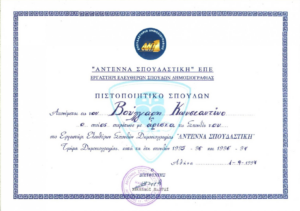






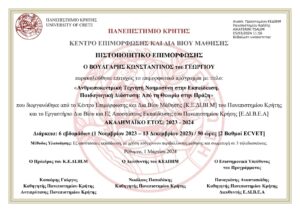

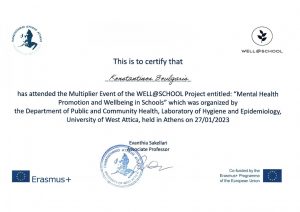






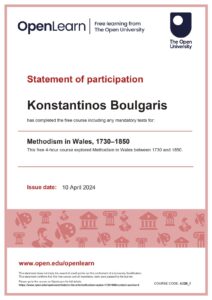
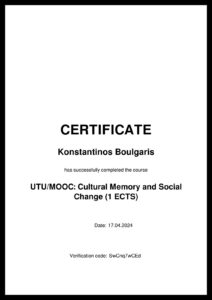











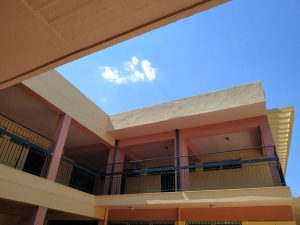

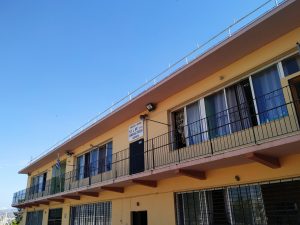






Αφήστε μια απάντηση
Για να σχολιάσετε πρέπει να συνδεθείτε.